Whanganui National Park has a special charm. Maybe it’s the Whanganui River that winds through 290 km of forests and grasslands. Maybe it’s the incredible history held within its trees, or the remnants of times long past. Or perhaps, it’s the Māori magic that lives in the place—its legends and stories.
For me, though, it was the incredible five-day canoe adventure I experienced. Whatever the reason, this place will enchant you from the very beginning. Something that may seem ordinary at first will soon become an unforgettable part of your journey through New Zealand.
Whanganui National Park is located in the center of New Zealand’s North Island. The park stretches between the towns of Taumarunui (to the north) and Whanganui (to the south).
This area is home to a wide variety of native birds, such as the Blue Duck and the famous Brown Kiwi. Most of the park is covered by native forest.
Whanganui National Park was created to protect the Whanganui River and its many tributaries. In fact, this river is the third-longest in New Zealand and the most navigable. It also serves to protect the rich history that lives in its forests. The river was originally a transport route for the Māori people, and later, for British colonizers.
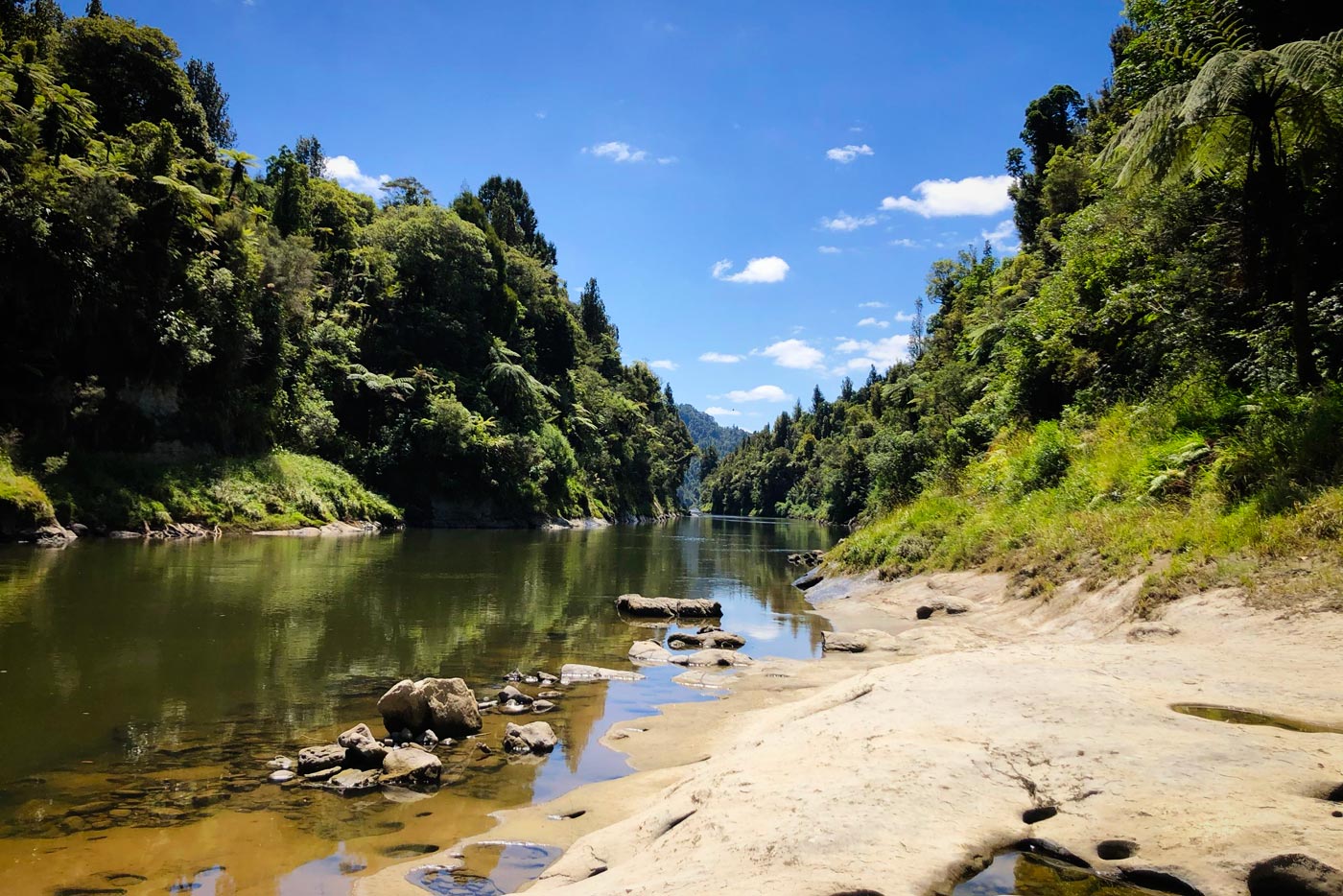
Part of this history is represented by the Bridge to Nowhere, a relic of an abandoned settlement from 1942.
A curious fact that shouldn’t go unnoticed: the Whanganui River is legally considered a person. Under New Zealand law, it can be represented in court if its rights are violated.
This legal decision to grant personhood to the river reflects an effort to protect sacred cultural sites from human exploitation.
The best time to visit the national park is from October to April. These are the warmest months of the year, and you’ll be able to swim in the Whanganui River. However, these are also the busiest months, especially during weekends and school holidays. Hiking trails and the river will be more crowded, and the experience may be less peaceful.
During the colder months (May to September), the park is still accessible, but low temperatures—especially at night—can make camping or swimming less comfortable. The advantage of visiting during this time is that there will be fewer people, and you’ll be able to enjoy the park more freely :))
t’s essential to travel to New Zealand with comprehensive insurance. We were among the first to offer the popular IATI discount, and you can now get it with Heymondo Travel Insurance as well.
You can find more information about both companies through the links provided above, or you can access the discount directly using the buttons below (in both cases, you’ll see the reduced final price on their website):
Internet is mandatory for getting around and using metservice, the country’s weather service. Keeping up to date with the weather is necessary if you don’t want to have any problems. It can also be very useful when translating if you don’t understand English very well.
To do this, we will tell you how to get a New Zealand SIM card with the internet and take advantage of its affordable prices. And now we also have information about the New Zealand eSIM with unlimited data.
As mentioned earlier, the national park is flanked by two main towns: Taumarunui in the north and Whanganui in the south. Depending on your location and travel plans, one may be more convenient than the other.
By car, if you’re coming from Auckland, I recommend driving to nearby Taumarunui. The journey takes just over three hours. If you’re traveling by bus, the InterCity service from Auckland takes about five hours.
If you’re coming from Wellington, it’s best to head to Whanganui. By car, it takes around two and a half hours, and by InterCity bus, about four hours.
If you’re coming from the South Island, you can take a direct flight to Whanganui. Likewise, if you’re in Auckland and prefer not to drive for eight hours or spend ten hours on a bus, a flight is a good option.
Finally, there’s a shuttle bus that connects Taumarunui and Whanganui, taking about two and a half hours.
This is especially useful if you’re doing a multi-day hike or canoe route that takes you from one end of the park to the other. If you’ve left your car in Taumarunui and finish your route in Whanganui, you’ll know there’s a way to get back.
On this adventure, you’ll immerse yourself in Whanganui National Park — and you’ll do it by canoe. You’ll travel along the river, discovering native forests and fully surrounding yourself with nature. Wildlife will appear along the way as the calm waters carry you deeper into the forest.
You can also take a short walk to the famous Bridge to Nowhere.
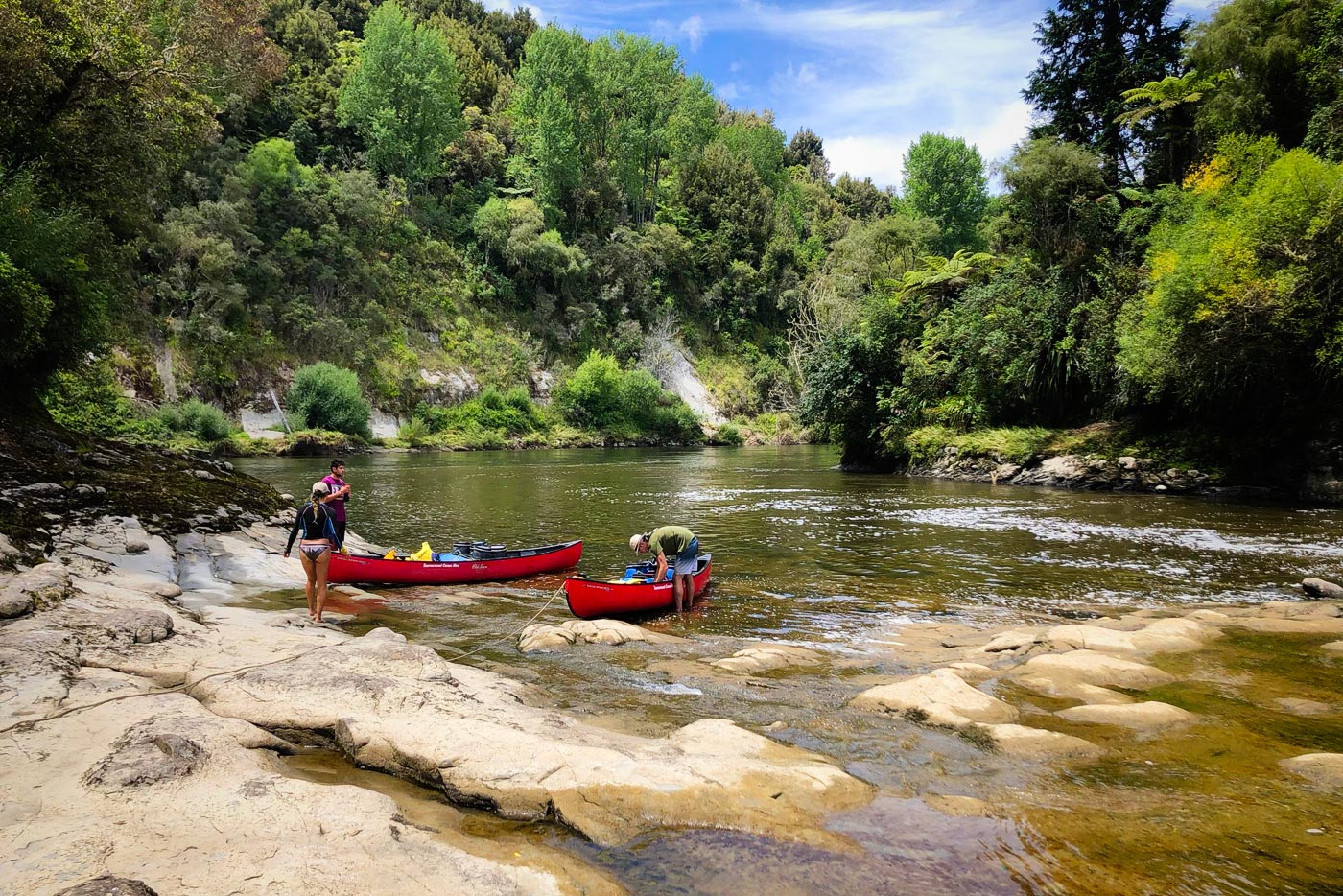
Oh, the memories that come flooding back as I write about this fantastic adventure. Five days in a canoe, paddling with my friends through rapids and forests. 145 kilometers that flew by, between nights camping under the stars and days of fun on the river.
Just don’t forget to pack mosquito repellents, those pesky sandflies will bite you when you least expect it.
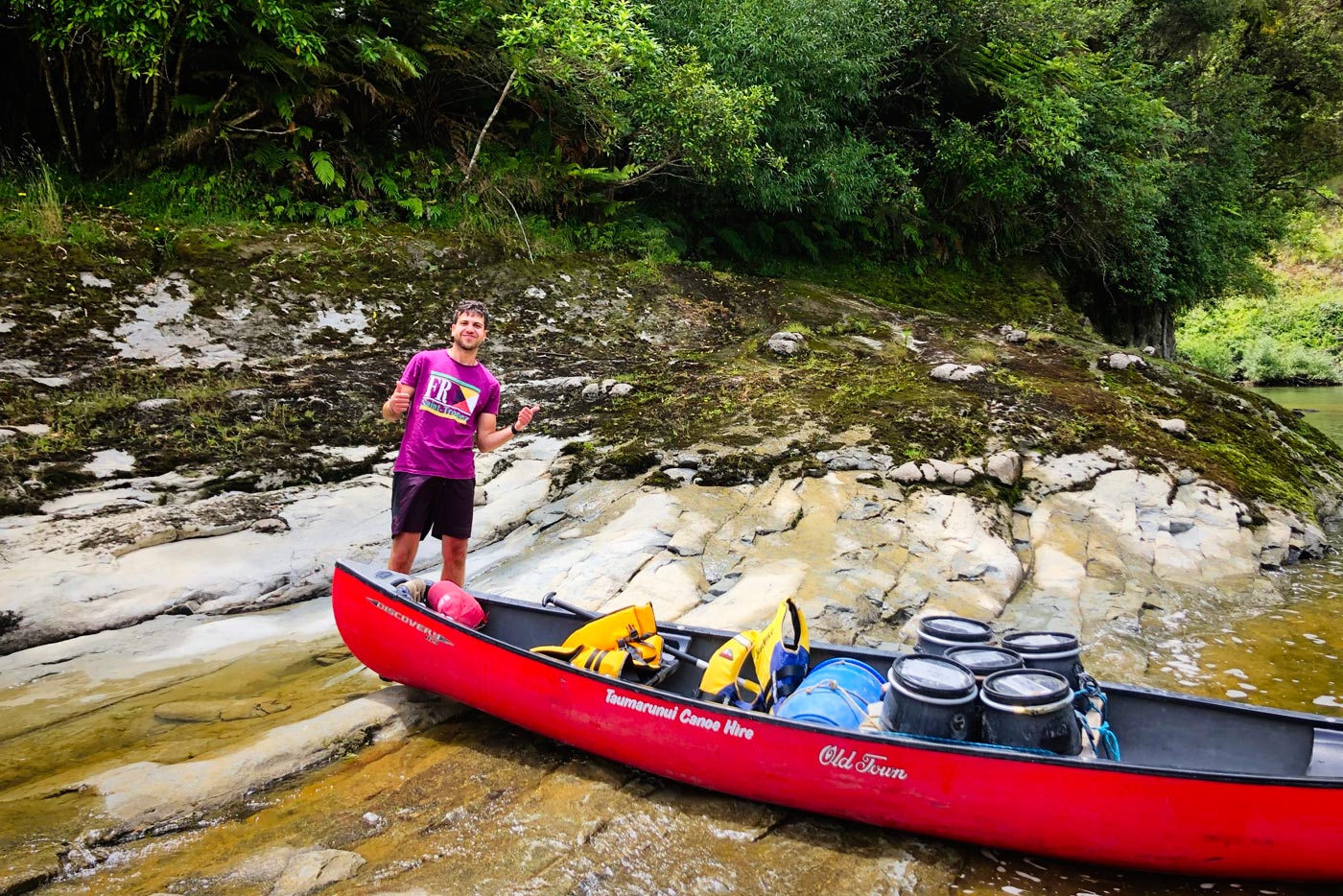
This canoe route is part of New Zealand’s Great Walks, so you’ll need to book your campsites online in advance.
Although the bridge itself may not look like much, it tells an important story about New Zealand’s past. Built in 1936, the project aimed to establish new settlements for soldiers returning from World War I. By 1942, just six years later, the settlement was abandoned.
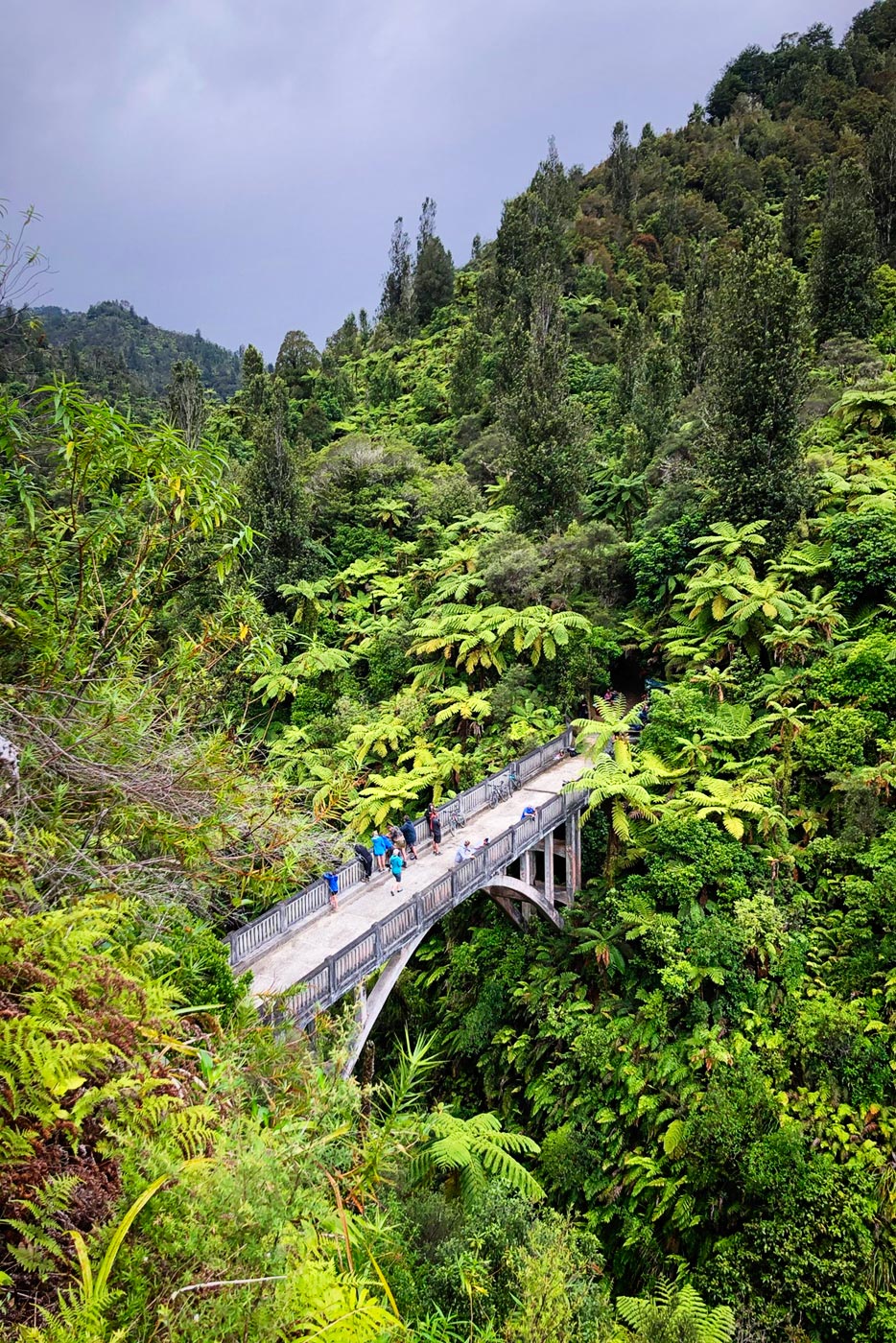
Today, the bridge remains as a relic of that era. In fact, the Bridge to Nowhere has become the most iconic attraction in Whanganui National Park.
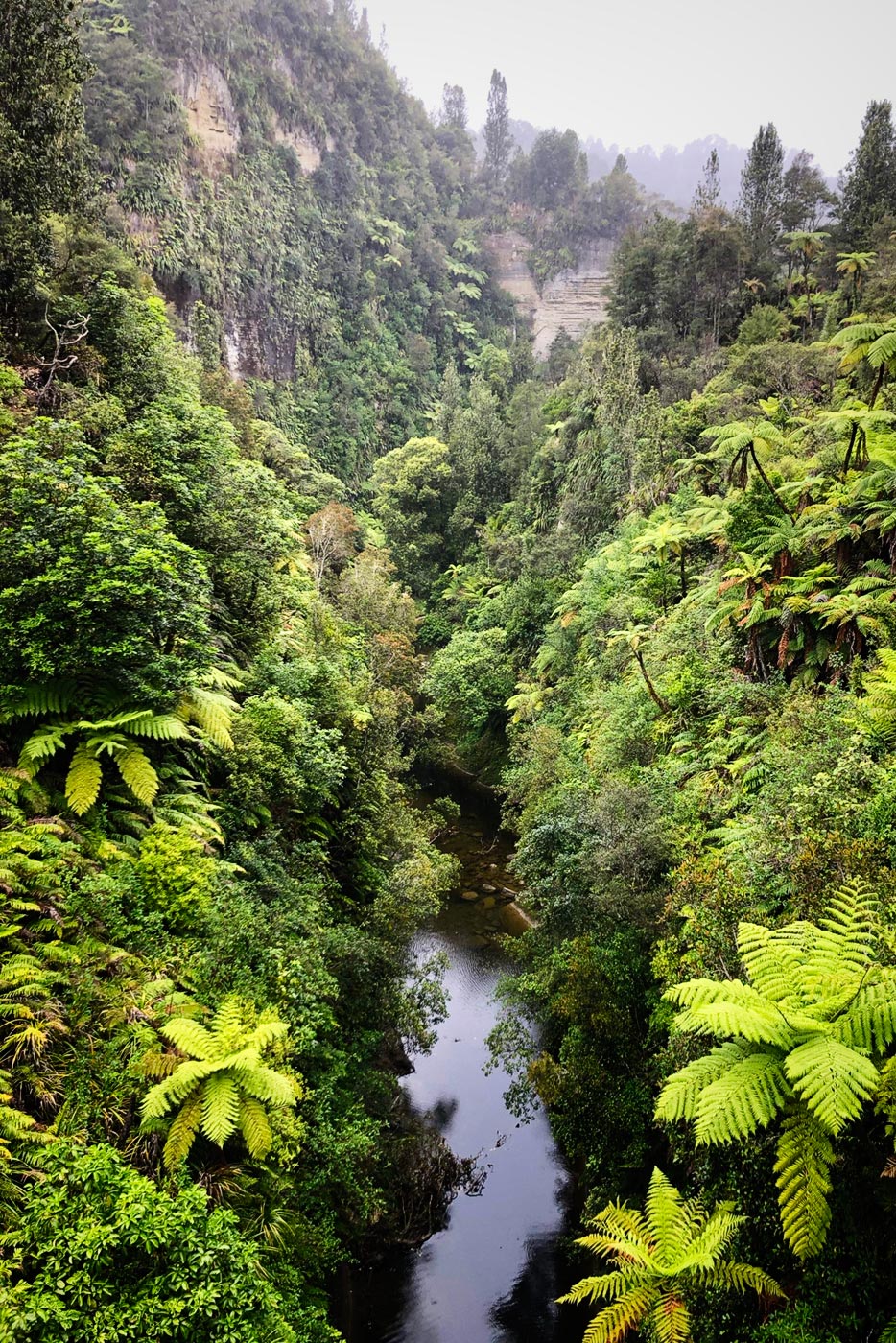
A cycling route begins on the slopes of Mt Ruapehu (see our Tongariro National Park guide for more) and continues all the way to the town of Whanganui, following the Whanganui River through the heart of the national park.
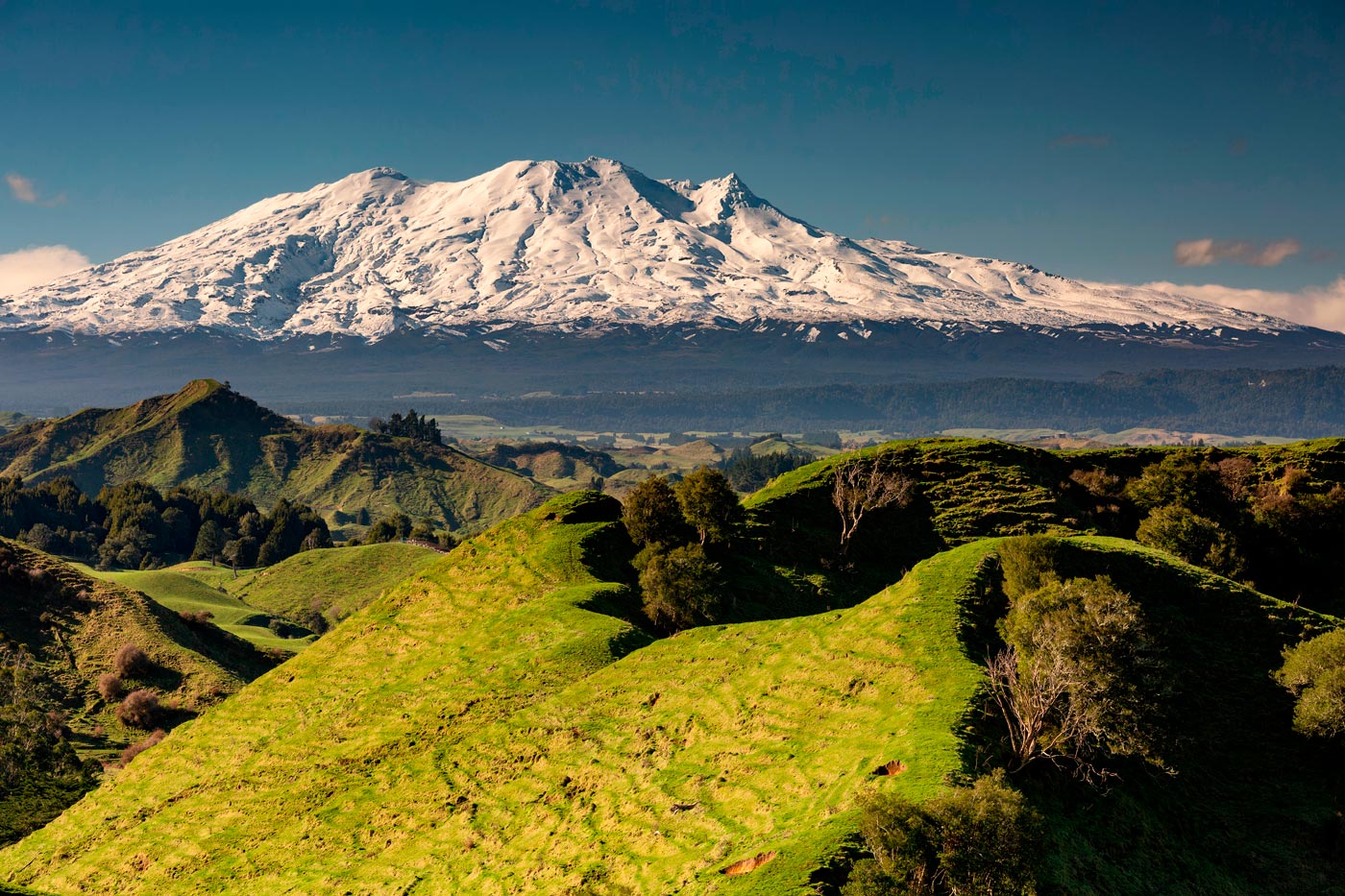
The full route takes between 3 and 8 days, depending on your experience level and how fast you want to go. But it might be worth taking it slow — enjoying the peaceful scenery, camping at the best sites, swimming in the river, or simply listening to the birdsong. Sounds pretty good, right?
This waterfall is a sight to behold. Fed by the powerful waters that give life to the Whanganui River, it offers a dramatic contrast to the calm waters you’ll travel by canoe. Don’t worry, you won’t have to go down the falls; just take a short detour to see them.
Trust me, it’s worth it. You can dock your canoe and walk up alongside the first cascade to see Kaiwhakauka Waterfall in all its power.
You can also visit by bike or on foot. From Blue Duck Station, it’s a 3-hour round-trip hike through native bush. The trail can be quite muddy, so bring sturdy boots or good biking skills.
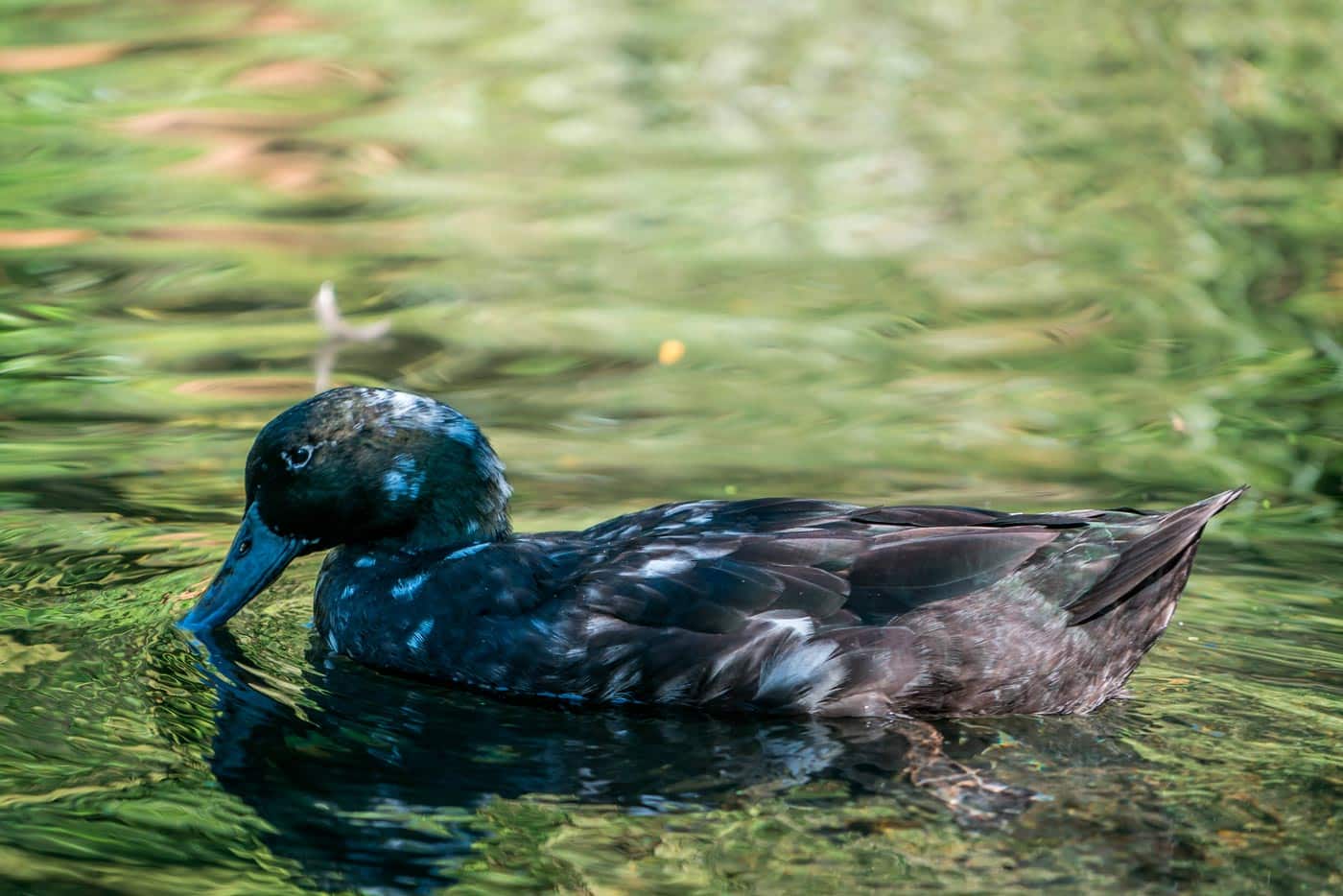
This is also a great spot to try and spot the rare and protected Blue Duck. Stay quiet and keep your eyes peeled for a chance to see one.
These are the two most accessible and beginner-friendly walking tracks in Whanganui National Park. From the town of Whanganui, it’s a 40-minute drive to reach the start near the river. Just park and hit the trail.
The walk to Atene Viewpoint is a 2-hour round trip and offers spectacular views of the river, lush valleys, and the mountains that shape the park.
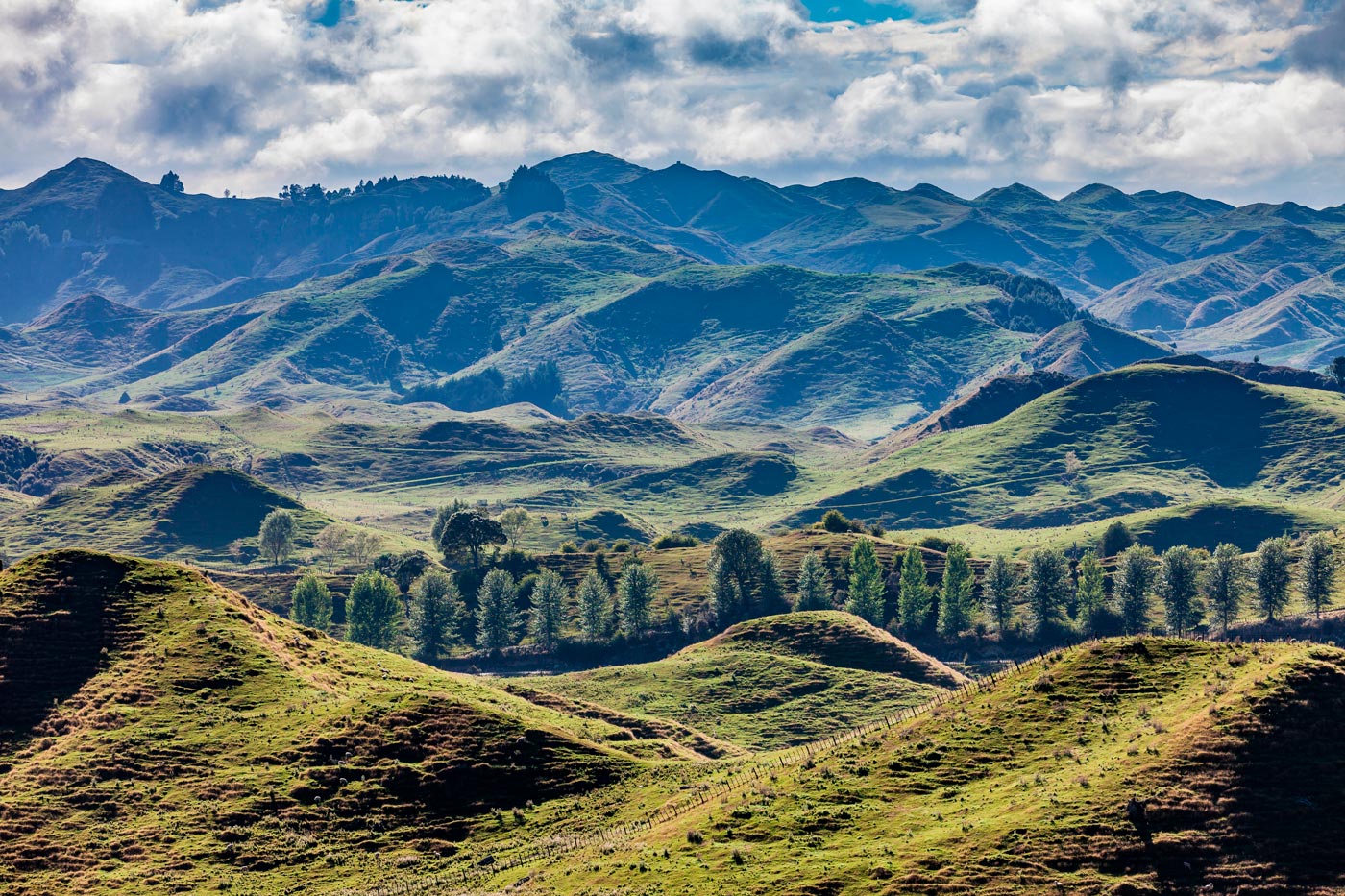
For those who want more, the Skyline Track is a longer 8-hour round trip. It passes by the Atene Viewpoint and continues deeper into the Whanganui National Park, giving you the chance to gaze out over the vast landscape.
This was the tour I most highly recommend. It’s not guided, so you’ll be more or less on your own. However, everything you need will be provided: a canoe or kayak (whichever you prefer), barrels to keep your luggage and tent dry, a life jacket, a detailed map of the route, a radio for emergency contact, and a short briefing before you depart.
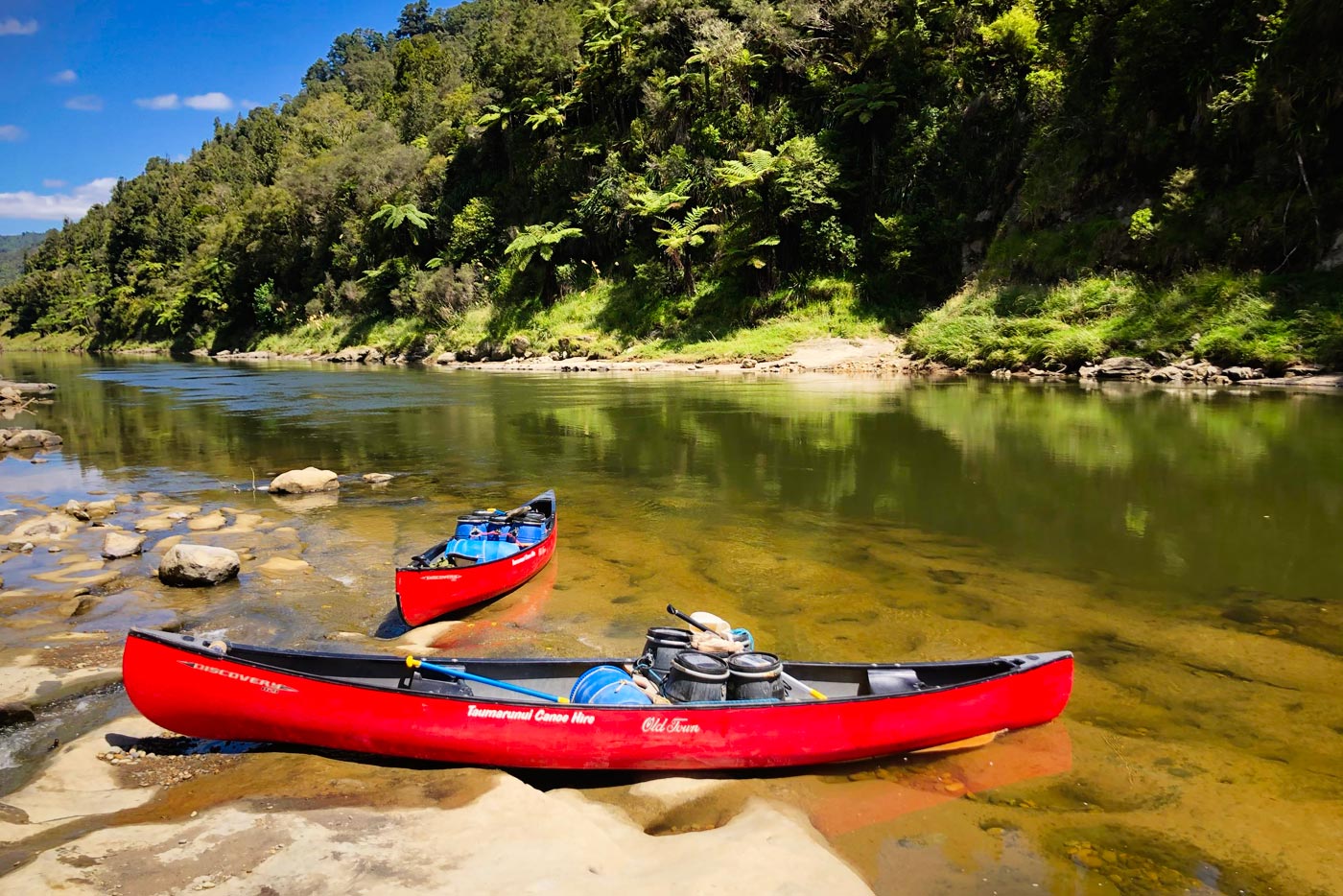
The tour begins at various points along the Whanganui River. Depending on how many days you choose, the route can be completed in 3 or 5 days. It usually ends in Pipiriki, where a minibus will pick you up. Sounds good? If you’re up for it, get ready for an unforgettable experience.
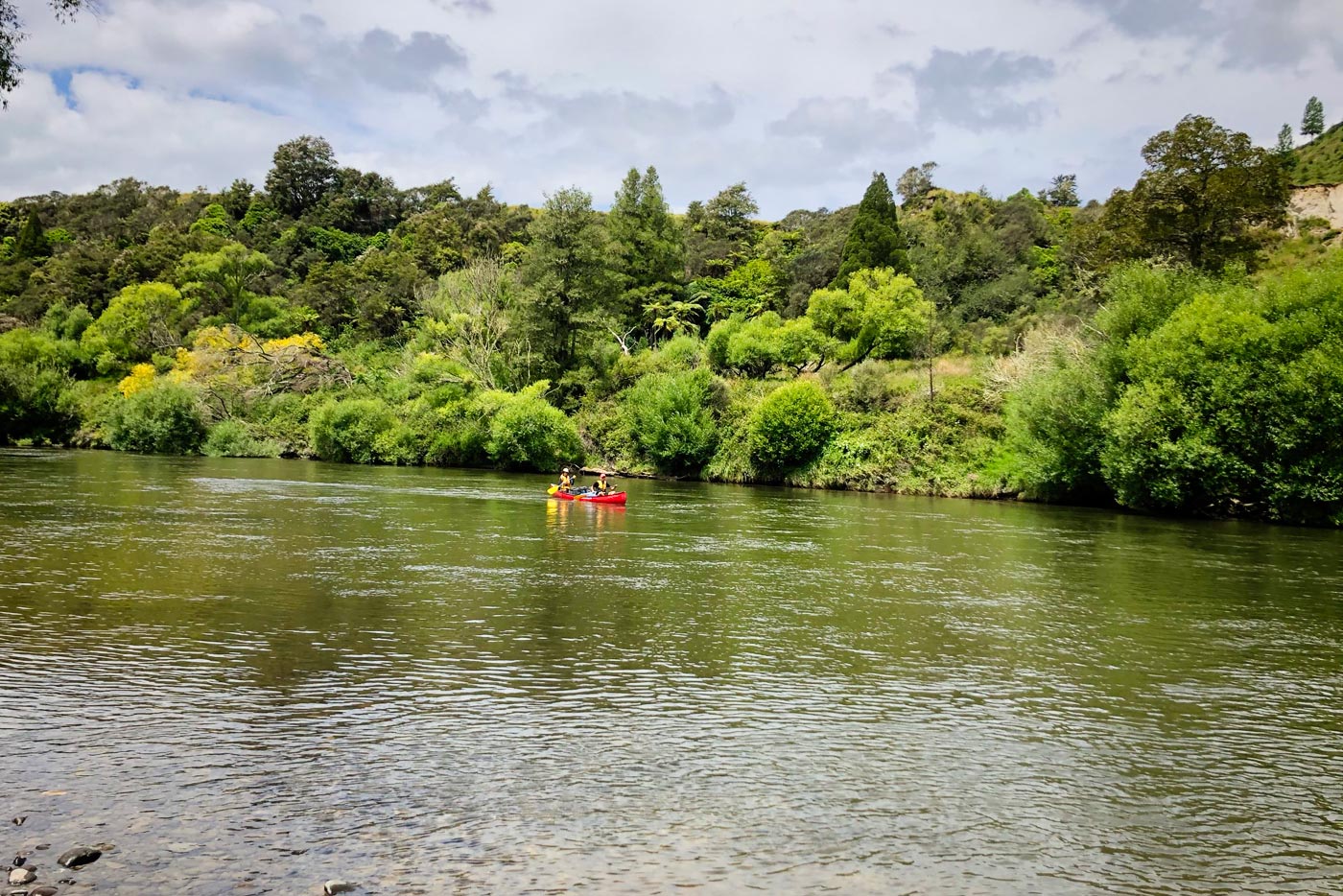
A little tip, don’t be afraid of tipping over; it’s actually a lot of fun. Just make sure your phone is safe! 😉
This option is similar to the previous one but includes a guide. Don’t worry — the adventure is just as exciting and chaotic. This version is perfect for families with kids or for those who aren’t too confident on the water.
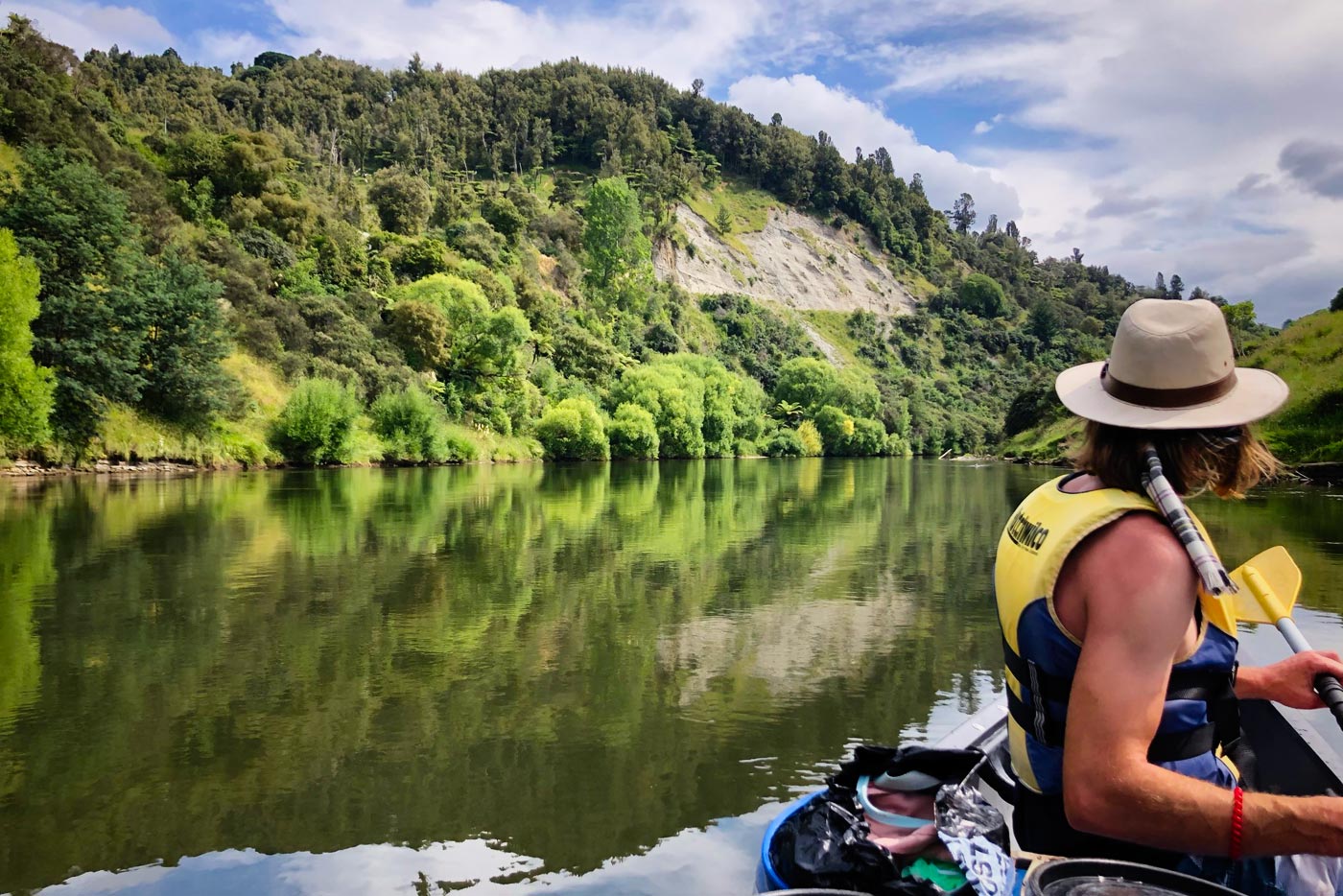
You’ll be taught how to paddle, helped with setting up your tent, and all meals will be provided during the 3- or 4-day excursion.
This full-day tour (about 8–10 hours) explores Whanganui National Park by bike, leading you to the famous Bridge to Nowhere. You’ll return by motorboat along the Whanganui River.
It’s a perfect way to experience the highlights of the park in a short time. The tour provider includes everything you’ll need — transportation, bike rental, gear, and more.
Here are several accommodation options divided by budget to help you choose the best one for your trip.
Earthsounds Country Cottage gets amazing reviews — and no wonder! It offers private rooms, a kitchen with an oven, a garden, and even free bikes. That’s right — free bikes! It’s a great way to get your first glimpse of Whanganui National Park.
If you’re in Taumarunui and want a comfortable stay at a great price, add this one to your list.
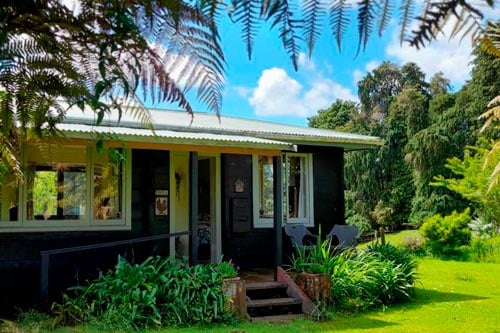
Other affordable options with good facilities include:
It was a tough call between two hotels, but in the end, 21moreno won out.
I loved having an entire house at my disposal: 5 bedrooms, 4 bathrooms, garden, kitchen, dining area… What more could you want? Perfect for groups sharing costs.
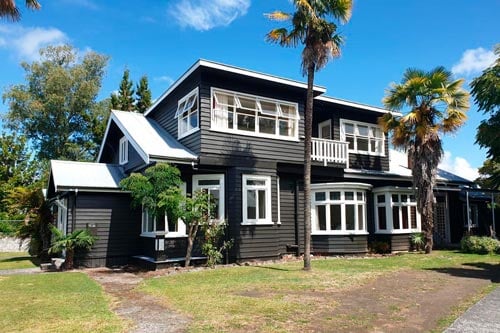
Another excellent mid-range option worth mentioning is Echolands Valley Lodge.
The most luxurious and well-equipped accommodation in Taumarunui is Bradleys Garden B&B. Here, you’ll find spa suites with balconies, plus a pool and hot tub.
My favorite part? The delicious continental breakfast — a perfect way to fuel up before your Whanganui National Park adventure.
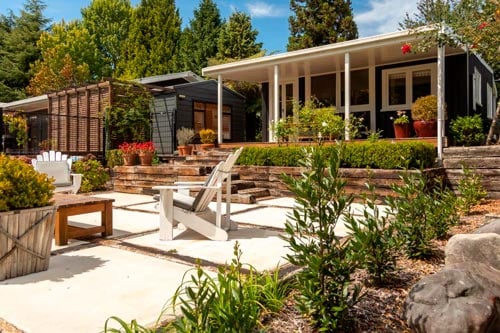
Staying in Whanganui is cheaper than in Taumarunui. One great example is Braemar House B&B and YHA Hostel. At just NZ$30 per night, it’s about as budget-friendly as it gets.
You’ll have access to a shared kitchen, a common room for socializing, and breakfast. You can choose between dorm beds or private rooms.
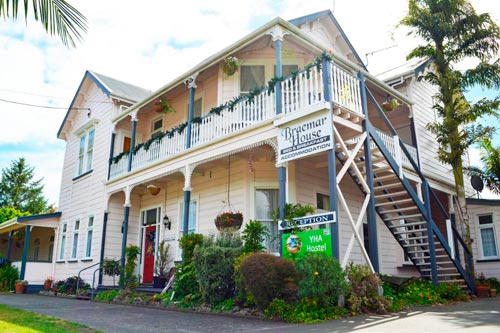
Siena Motor Lodge is perfect if you’re exploring the Whanganui National Park by car, it offers free parking. In fact, this was our choice after canoeing down the river.
The best option are the units with up to two beds, where several people can stay. In addition, the rooms include a private bathroom, a microwave, and a welcome basket.
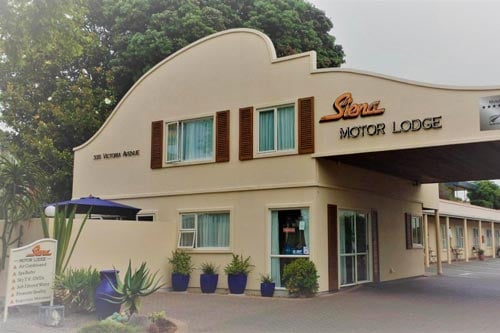
Other good mid-range options we considered:
151 On London Motel & Conference Centre has it all. From affordable, well-equipped rooms to top-tier suits that feel more like private apartments.
If you’re looking to relax in comfort after a long day in the park, this is the place.
Suites span two floors with a dining area, kitchenette, private bathrooms with whirlpool tubs, and a balcony with views. The hotel also includes a spa and breakfast.

To truly experience Whanganui National Park, the best ways to get around are on foot or by canoe. You could also opt for a boat tour if you want to take it easy.
However, the most efficient way to travel through New Zealand — and by extension, Whanganui — is by car or campervan. This allows you to reach trailheads easily and camp at the many sites around the park.
New Zealand is extremely campervan-friendly, with plenty of campsites, public toilets, showers, and other amenities. It’s a simple, comfortable, and cost-effective way to explore. You’ll save money on both accommodation and food.
Whanganui is a must if you’re visiting the North Island and have time for a tour. Honestly, the best part of the park is the Whanganui River and the adventures it offers. Set aside 4 or 5 days to explore the area properly by canoe or kayak.
This is also the only river in New Zealand where you can take multi-day trips over three days.
Before you go, here are a few tips from someone who’s been there:
Click on the image and it will take you to a new Google Maps window with all the points of interest to travel around Whanganui.